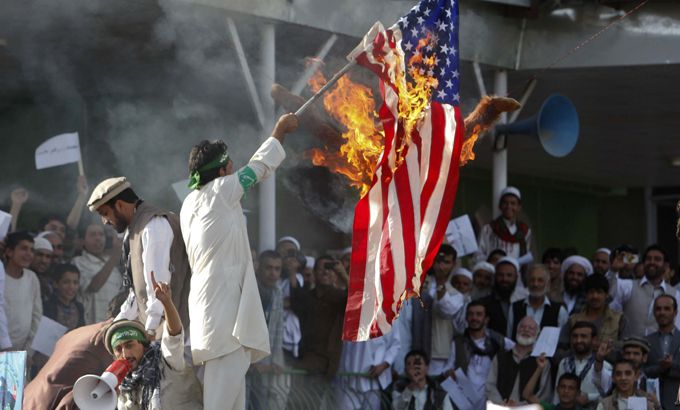
Has the Afghan surge been a complete failure?
As new data suggests that the US surge in Afghanistan has failed, we ask how it will impact the upcoming US elections.
It was arguably the most important foreign policy decision of Barack Obama’s first term as US president. Now new data suggests that the Afghan surge has been a military failure.
|
“Afghanistan is an extremely varied country and there are a lot of different attitudes. I think that we sometimes assume that bringing in services would automatically win over hearts and minds, when in reality sometimes just the intrusion of any outsider … was actually destabilising.“ – Frances Bown, a fellow at the council on foreign relations |
With just over a month until the election, the US military has withdrawn the last of the 33,000 troops Obama sent to Afghanistan in December 2009.
But according to data released by the NATO command in Afghanistan or ISAF obtained by Wired magazine the Taliban’s momentum is fiercer now than before the surge.
Insurgent attacks may be lower than last year, but they are significantly higher when compared to 2009 before the surge was launched. And the number of civilian casualties caused by insurgent attacks in August 2012 was the highest for three years.
The surge was presented as the culmination of Obama’s careful deliberation – a sign of the qualities he brought to his role as commander in chief.
That the decision has so little to show for the cost in lives and money should be a major issue on the campaign trail. But with Republican candidate Mitt Romney seemingly loathe even to mention Afghanistan, it is not.
|
“The fact is that the Taliban has been able to vastly increase the numberof IED attacks that are effective in causing casualties on the part of the foreign troops. If you look at the figures for actual casualities from those attacks – its really quite dramtic.“ Gareth Porter, an investigative reporter |
And beyond a vague promise to withdraw American troops by the end of 2014 neither the president nor Romney seem to have any clear vision for the future.
NATO’s lack of confidence in the Afghan forces that were meant to be strengthened by the surge was made abundantly clear when the US temporarily scaled back joint operations earlier this month after a string of so-called green on blue attacks. Operations did resume on Thursday but with far stricter safeguards in place.
So has the surge been a complete failure? And how will it impact the upcoming US presidential elections?
Inside Story US 2012, with presenter Shihab Rattansi, discusses with guests: Lieutenant colonel Tony Shaffer, a former US intelligence officer who has served two combat tours in Afghanistan; Frances Bown, an international affairs fellow at the council on foreign relations; and Gareth Porter, an investigative reporter and historian.
|
“From day one of the surge all we [the US] have been doing is adding fiction to the friction – there’s no actual achievable objectives within the military context of this effort … The real issue is something that this administration has not been able to grasp. It’s all about the ideology – the tribal nature of the environment. Because they’ve never grasped that, they have continued to use a western methodology without understanding what they are actually going to try to achieve and what is sustainable.” Tony Shaffer, a former US intelligence officer |
FIGURES OF “ENEMY INITIATED ATTACKS”:
- In August 2009, when the Obama administration was debating the need for a troop surge – Taliban and allied fighters attacked US-led forces about 2,700 times
- The number of attacks approached its peak near 4,500 in August 2010
- Another measure of resistance to the occupation is the number of what the military calls executed improvised explosive device attacks
- In August 2009, fighters used just under 600 homemade bombs targeting US-allied forces
- Such attacks approached a high of nearly 800 in July 2011
- The figures were just over 600 this August
- The US-led ISAF says such attacks have fallen from last year’s highs
- But compared to the pre-surge period the situation is far worse